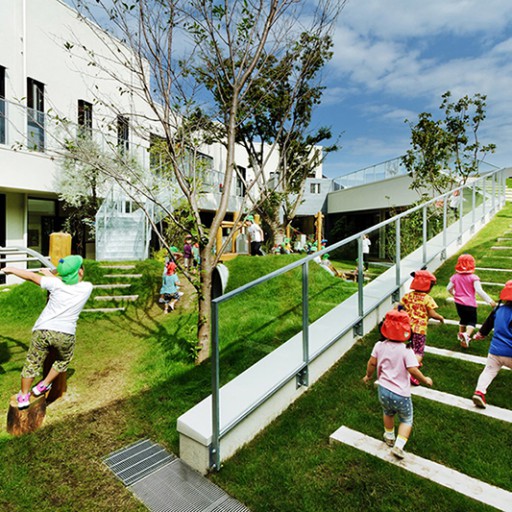In architecture, a good building is one that manages to perfectly integrate into the surrounding space. The trend of bringing architecture and nature together can be seen all over today’s cities. In some cases, this ‘coming together’ goes beyond just respecting the natural aesthetic that surrounds the building, with the goal of making the two interact and understanding the space itself as another architectural element. Let’s take a look at a few examples.
Organic and environmental architecture: a sustainable change
One of the biggest challenges in architecture is finding a space that allows for nature to be understood through different shapes and forms. The space should encourage consciousness, awareness, and a commitment to the natural environment and its materials.
This isn’t a new concept. It’s called organic architecture and was started in the early 20th century by Frank Lloyd Wright. One example was his Fallingwater house, which reinterpreted nature by respecting local materials so that the structure formed part of its surroundings.
Ver esta publicación en Instagram
This symbiosis evolved into environmental architecture, an approach that tries to transform the mechanisms of traditional architecture. How does it do this? By incorporating sustainable materials, paying attention to the needs of the surrounding environment, and taking climate, renewable energy, and new technology into account. The optimisation and efficient use of resources has advantages for the surrounding location.
The integration of nature and architecture can be realised in an indirect way using elements that are environmentally friendly. There is the option of constructing buildings with vertical gardens that combine greenery with the building itself, be it the façade or the roof. We can also include elements of nature inside a building.
Ver esta publicación en Instagram
Refurbishing existing infrastructure and other structures that are no longer used is another noteworthy approach. Stephanie Chaltiel, architect and founder of Mudd Architects, discussed this in the IKEA Spain documentary about sustainability. In the film, which was shown at the Madrid Design Festival 2021, Chaltiel says that improving on what already exists is “a really important aspect to push in terms of redesigning the world”.
Chaltiel believes that “going back to the very basic needs that people may have might give us some clues [about] how to improve current architecture”. She doesn’t dismiss the idea of using drones to install vertical gardens or even forests in cities, but she reminds us that “the real progress and innovation would be how to take care of those mini-forests in the city”.
Ver esta publicación en Instagram
Bubble hotels, geodesic houses and…Martian architecture
Bubble hotels are another example of this integration. Designed by Pierre Stéphane, this type accommodation has now become quite common. It allows you to sleep in a transparent, bubble-shaped cabin so that you can see the sky.
Ver esta publicación en Instagram
Ver esta publicación en Instagram
In the pristine natural environment that is the mouth of the Tambre river in Galicia, you’ll find the Cabañas de Alebeida among the trees. These cabins are an example of perfect integration with the surrounding forest, allowing for privacy and a connection to nature in its purest form.
This project was recently awarded the Premio de Arquitectura y Urbanismo 2020 (the Prize for Architecture and Urban Planning 2020) by the Consejo Superior de Arquitectura de España (The Higher Council of Architects of Spain). The architectural part of the project was led by Francisco Liñares and Alfonso Salgado, and was based on three fundamental principles: sustainability, efficient use of resources, and integration into the landscape.
Ver esta publicación en Instagram
Ver esta publicación en Instagram
Geodesic houses must be included in any list of architecture that blends into nature. These designs use a dome-shaped construction model and sustainable materials, creating immersive spaces that are environmentally friendly and allow for huge savings in terms of energy and cost.
Ver esta publicación en Instagram
In the future, architecture will have to adapt to planets other than Earth. The first space village, from Paris firm Interstellar Lab, will be built in the Mojave Desert in California. The village will be self-sufficient and exist in environmental conditions that are similar to those on Mars. The facilities will be carbon neutral and zero-waste.
Ver esta publicación en Instagram
We love connecting with different points of view, so tell us what you think by using #ConnectionsByFinsa on social media. We will read your comments no matter where you post them from, be it Earth or Mars.




